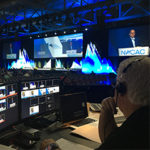Digital Experience Institute Advisory Board members Kaila Bongiovanni, DES, senior digital marketing manager, Microsoft; Stefania Conti-Vecchi, DES, founder and CEO, EVENTagist; and David Stankiewicz, DES, project manager, strategic programs, IEEE (Institute of Electrical and Electronics Engineers), on the top things you should keep in mind when designing a digital event.
KAILA BONGIOVANNI
Before diving into planning, take a moment to reflect on your intentions for the digital event. Are you targeting new or current customers? Do you hope to inspire, motivate, educate? Or perhaps the goal is to increase awareness? Notice I didn’t mention driving leads or demand generation!
Think about the goal of your customers first — what are their benefits for attending the digital event? Hold true to this as your event mission or mission statement when developing an agenda and assigning guest speakers.
STEFANIA CONTI-VECCHI
Make sure your event objectives are clearly in mind, don’t forget that content is king, and be sure to design an engaging experience for all your attendees. It’s all about creating value for them with the expectation that any information they will receive from you and any activity they’ll experience will be designed with them in mind. Speaker training and a professional facilitator are crucial to their engagement.
Opt for the easy-to-use tech solution that best fits your participants’ needs and supports your digital-event objectives. Make it easy for them by providing info and support about the platform. Last but not least, don’t forget to give remote attendees the chance to network with each other during the sessions as well as the breaks. Provide opportunities for them to show up in video and interact with other participants or speakers if they want to. This is a new trend — some new platforms allow participants to share their selfies on the event chat.
DAVID STANKIEWICZ
The top things to keep in mind when designing a digital event are ease of access and use for your attendees. You want to be sure your audience can get to your event quickly, plus find their way around your event or platform intuitively. I also think mov- ing toward the simplistic is key; however, there is a fine line a digital-event designer walks between the simple and the basic. Make sure your event is simple, not basic. Designers who put the most important features of their digital event front and center — without creating too much other background noise or confusion — are making a smart move.
Simplicity is such an important guiding principle for us at IEEE when designing virtual/digital events that we’ve created a Virtual Events Center of Excellence. It’s a way of providing guidance to our conference-organizing community to make it as simple as possible for them.
For information about the Digital Event Strategist (DES) certification, news about virtual and hybrid events, educational opportunities, a resource directory, and more, visit PCMA’s Digital Experience Institute.



